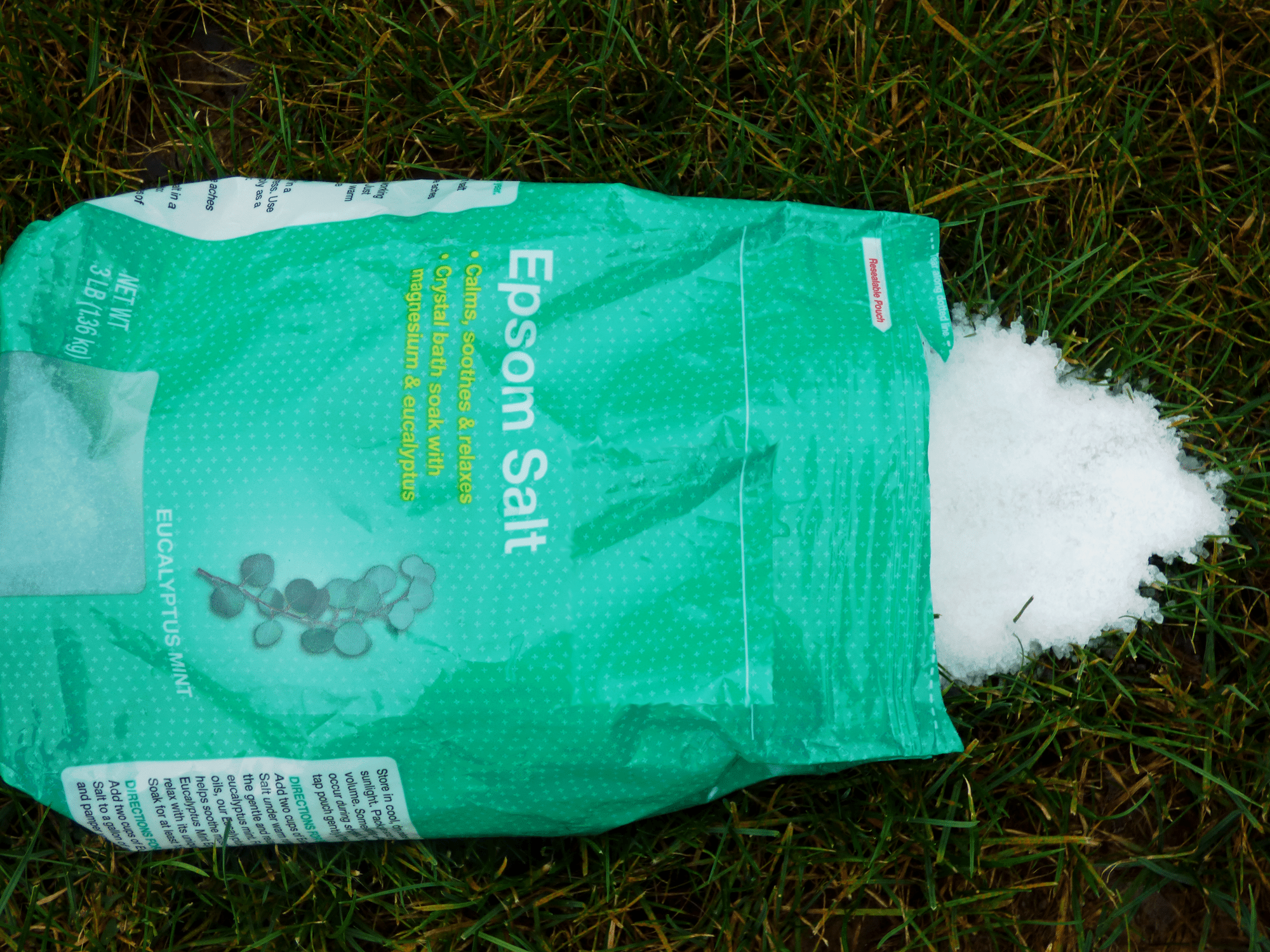
You are no doubt reading this on an electronic device, but before such wonders existed, many of us garnered our news and information from a newspaper. Yep, one printed on paper. Amongst these pages, more often than not, there would be a gardening column touting the proper way to prune roses or how to have a lawn envied by all. Lawn advice was often a mixed bag of info gleaned from personal experience or other readers. One such piece of advice was in the use of Epsom salt as lawn fertilizer. So what, if anything, does Epsom salt do for grass?
What Does Epsom Salt Do for Grass?
Epsom salt, or magnesium sulfate (MgSO4), does indeed contain magnesium, which is an important component of chlorophyll. It is touted as a safe, natural product that can be used to increase everything from seed germination, nutrient absorption, growth, and general health of lawns and plants. There are a multitude of precise formulations for veggies, lawns, shrubs, trees, and houseplants. You need only look on the internet (unless you still read the newspaper!) to find any number of such concoctions with purported claims. So does using Epsom salt on the grass work and are there really any benefits of Epsom salt on lawns? It really depends on what you are using the Epsom salt on the grass to correct. Let’s consider first what Epsom salt has been used for in the commercial farming industry. Epsom salts have been used and studied for effectiveness on crops that were lacking in magnesium. Magnesium deficiency is caused by either mineral imbalances in the soil or plant itself. This is most common in light, sandy, or acidic soil that is leached by rainfall or irrigation. The addition of Epsom salts amongst crops has been used with indeterminate results and include:
That said, what about Epsom salt lawn care? Are there benefits to applying Epsom salt on lawns?
Epsom Salt Lawn Care
As previously mentioned, Epsom salt contains magnesium (10% magnesium and 13% sulfur), which is key to seed germination, chlorophyll production, and improving the uptake of nitrogen, phosphorus, and sulfur. Most gardeners have historically used it on peppers, tomatoes, and roses. You can use it to up the magnesium levels in soils you have tested and found to be deficient. These are generally old, weathered soils with a low pH or soils with a pH above 7 and high in calcium and potassium. Dolomitic lime is usually used to raise soil pH, but the benefits of using Epsom salts on lawns is its high solubility, and it’s inexpensive. So how do you use Epsom salt as lawn fertilizer? Use Epsom salt as lawn fertilizer in the spring to facilitate lush green growth. Add 2 tablespoons (29.5 ml.) to each gallon (3.7 L.) of water used on the lawn. If you have a sprinkler system, lightly sprinkle directly atop the grass and then allow the system to water into the sod. It’s as simple as that. Now you just have to sit back and absorb the grass envy from your neighbors.
Sign up for the Gardening Know How newsletter today and receive a free copy of our e-book "How to Grow Delicious Tomatoes".

Amy Grant has been gardening for 30 years and writing for 15. A professional chef and caterer, Amy's area of expertise is culinary gardening.
